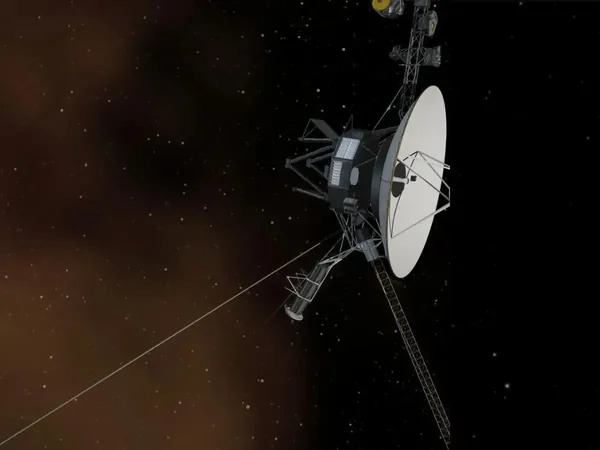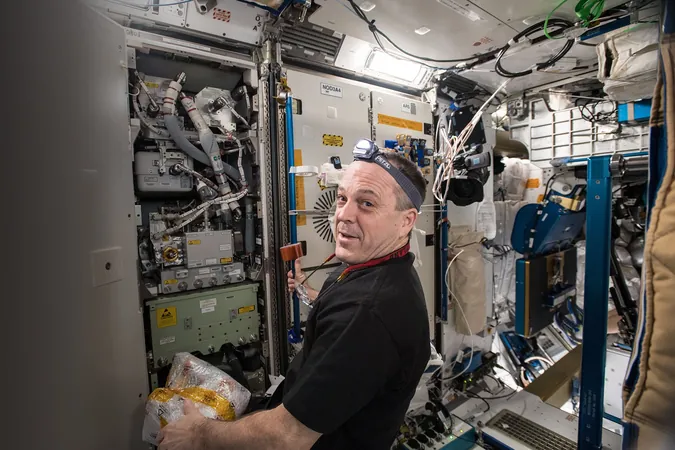
The Nail-Biting Moment NASA Almost Lost Voyager 2: A 2023 Communication Crisis
2025-08-30
Author: Liam
A Two-Week Silence That Shook NASA
In July 2023, a nerve-wracking crisis nearly brought humanity’s longest-operating spacecraft, Voyager 2, to the brink of oblivion. For two weeks, NASA held its breath as a seemingly minor error transformed into a major disaster.
The Mishap That Cut Communication
It all began on July 21 when a routine software upload went disastrously awry. An incorrect command caused Voyager 2's high-gain antenna to shift just two degrees off its optimal angle, severing crucial contact over 12.3 billion miles from Earth. In an instant, this marvel of engineering became deaf and mute, leaving NASA in a state of panic.
Faint Signals and Desperate Measures
By August 1, engineers caught a faint whisper of a signal but couldn't extract any data. This marked the longest blackout for Voyager in decades—two agonizing weeks without vital information from a probe that has journeyed further than any human-made object in history. Fortunately, Voyager 2 remained on its intended course, but the silence was deafening.
The High-Powered Rescue Plan
In a race against time, the engineers unleashed their best hope: a powerful 'shout' command. On August 2, the Deep Space Network’s Canberra station beamed a robust 100 kW S-band signal straight at Voyager 2. With an agonizing 18.5-hour wait for a response, the team held their collective breath for 37 hours.
Finally, on August 4 at 12:29 a.m. EDT, jubilation erupted as data began to flow again; communication had been revived, and once more, Voyager 2 was sharing its remarkable experiences from the beyond.
A Close Call That Highlights Fragility
Had the 'shout' failed, Voyager 2's onboard systems would have attempted an automatic reset on October 15. This secondary backup offered a glimmer of hope but thankfully was not needed. Yet, the incident served as a sharp reminder of how vulnerable this incredible mission is.
Voyager’s Race Against Time
Despite the scare, mission scientists maintained a sense of calm. Voyager 2 continues to conduct groundbreaking studies of interstellar space, and while missing a few weeks of data isn't catastrophic for long-term science, each moment is invaluable. The robotic probe operates on plutonium-238 generators, and as instruments are gradually powered down to conserve energy, the window for sending data is slowly closing. This 46-year saga underscores the precarious balance of human error and the relentless march of time.









 Brasil (PT)
Brasil (PT)
 Canada (EN)
Canada (EN)
 Chile (ES)
Chile (ES)
 Česko (CS)
Česko (CS)
 대한민국 (KO)
대한민국 (KO)
 España (ES)
España (ES)
 France (FR)
France (FR)
 Hong Kong (EN)
Hong Kong (EN)
 Italia (IT)
Italia (IT)
 日本 (JA)
日本 (JA)
 Magyarország (HU)
Magyarország (HU)
 Norge (NO)
Norge (NO)
 Polska (PL)
Polska (PL)
 Schweiz (DE)
Schweiz (DE)
 Singapore (EN)
Singapore (EN)
 Sverige (SV)
Sverige (SV)
 Suomi (FI)
Suomi (FI)
 Türkiye (TR)
Türkiye (TR)
 الإمارات العربية المتحدة (AR)
الإمارات العربية المتحدة (AR)